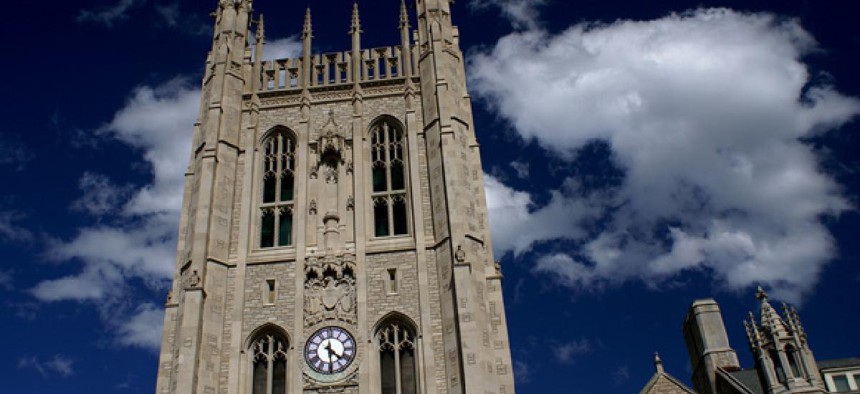
Flickr user Vironevaeh
Survey says only 2.3 percent of college students want federal jobs
Government should overhaul its pay system to help generate more interest in vacancies, nonprofit says.
A survey of more than 35,000 college students released Monday shows that only 2.3 percent of them plan on pursuing careers in federal government.
The National Association of Colleges and Employers conducted an online survey of students pursuing bachelor’s to advanced degrees at 599 schools in all 50 states and Washington. It asked about employment plans, salary expectations and ideal attributes of a first job.
Only 6 percent of respondents planned to go into public service at any level of government, the lowest percentage since NACE started surveying students in 2008.
The nonprofit Partnership for Public Service, which analyzed the NACE data, said there are 102,500 federal vacancies that must be filled in fiscal 2012. That number does not include temporary positions, student internships, and Postal Service or military jobs. Many of the openings would be for replacement hires, said John Palguta, vice president for policy at PPS.
Although the government has experienced some success in attracting top talent in recent years due to a struggling economy, the competitive advantage occurred only in some occupational areas. Hiring and recruiting is a particular problem in the STEM -- science, technology, engineering and math -- fields, according to Palguta. The survey included 6,868 students pursuing STEM degrees. Of those, more than one-third said they planned to seek jobs in the private sector; another 33.9 percent intended to go to graduate school. Only 3 percent said they planned to work for the federal government. The remainder said they wanted to work for nonprofits, teach or pursue other endeavors.
“The government has a huge need for good medical and public health professionals,” Palguta said. “There are indicators that the general economy is starting to revive a little bit. The government is going to have to start focusing on not relying on the economy to drive people. They are going to have to go out and really look for these folks.”
He added that the survey’s methodology does not compare public sector jobs to comparable private sector ones. Rather, the survey compares characteristics of applicant pools. The margin of error for the survey was plus or minus 3.7 percentage points, with a 95 percent confidence level.
When asked what they are looking for in a first job, respondents interested in the STEM fields were most likely to place a high importance on their starting salary -- 30.5 percent expected to make more than $60,000 annually.
Overall, two-thirds of students in the NACE survey expected to make between $20,000 and $50,000 in their first job, while 15.4 percent expected to make more than $60,000 per year. An entry-level federal employee can expect to earn between $34,075 and $42,209 annually in Washington, with exceptions for certain agencies and slight variations in other parts of the country, the survey states. Of the federal jobs available in fiscal 2012, 15 percent are outside of Washington, Palguta said.
Typically, federal government jobs appeal to young people fresh out of degree programs because of their perceived stability and opportunities for advancement, Palguta said. But though the tradeoff to making less is often that government jobs offer more generous benefits, “people don’t join an organization because 30 years from the time they come on, they might be eligible for a good retirement plan,” he said.
“The kinds of folks most organizations want to attract have options,” Palguta said.
To attract more talent, PPS advocates abolishing the General Schedule pay system for federal jobs and instituting a “marketplace system” where pay would be based on going rates for talent in an occupation in each part of the country.
Republican lawmakers have used a recent Congressional Budget Office study of federal pay to defend extending a pay freeze on federal workers.
The CBO estimate found that federal workers made 16 percent more than private sector employees on average in pay and benefits combined, and 2 percent more in wages alone. The estimate noted significant differences in the pay gap, however, when statistics were broken down by employees’ education levels.
“What I fear and what we’re already seeing is that some folks look at the CBO findings and say, ‘Hey, look, CBO says federal workers are being paid 16 percent above [private sector] so we need to reduce compensation by 16 percent,’ ” Palguta said. “If you were to do that, it means some folks would be paid above market; some [already] below [market] would go even more below market and these would typically be your higher-level, more demanding jobs.”






